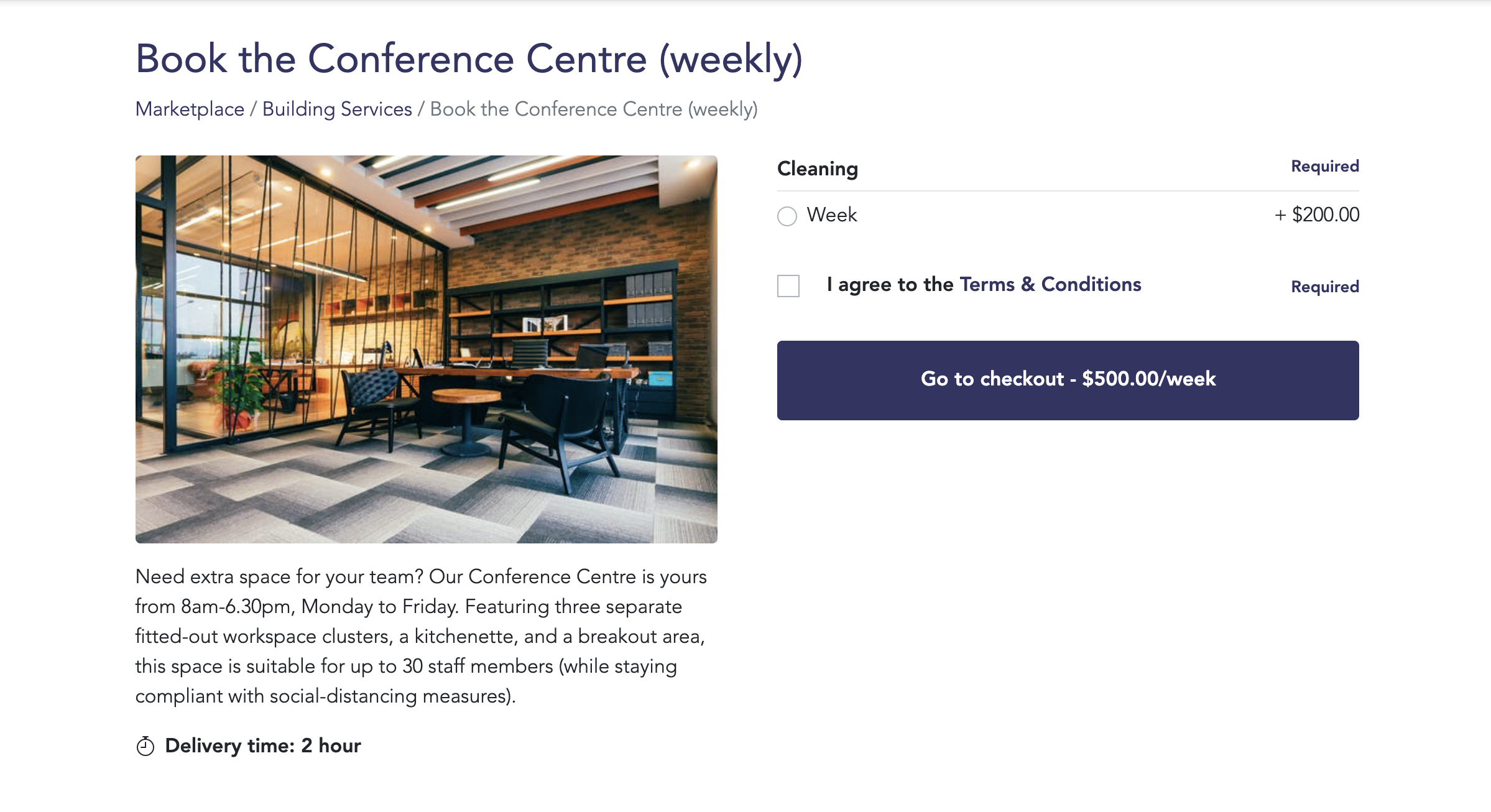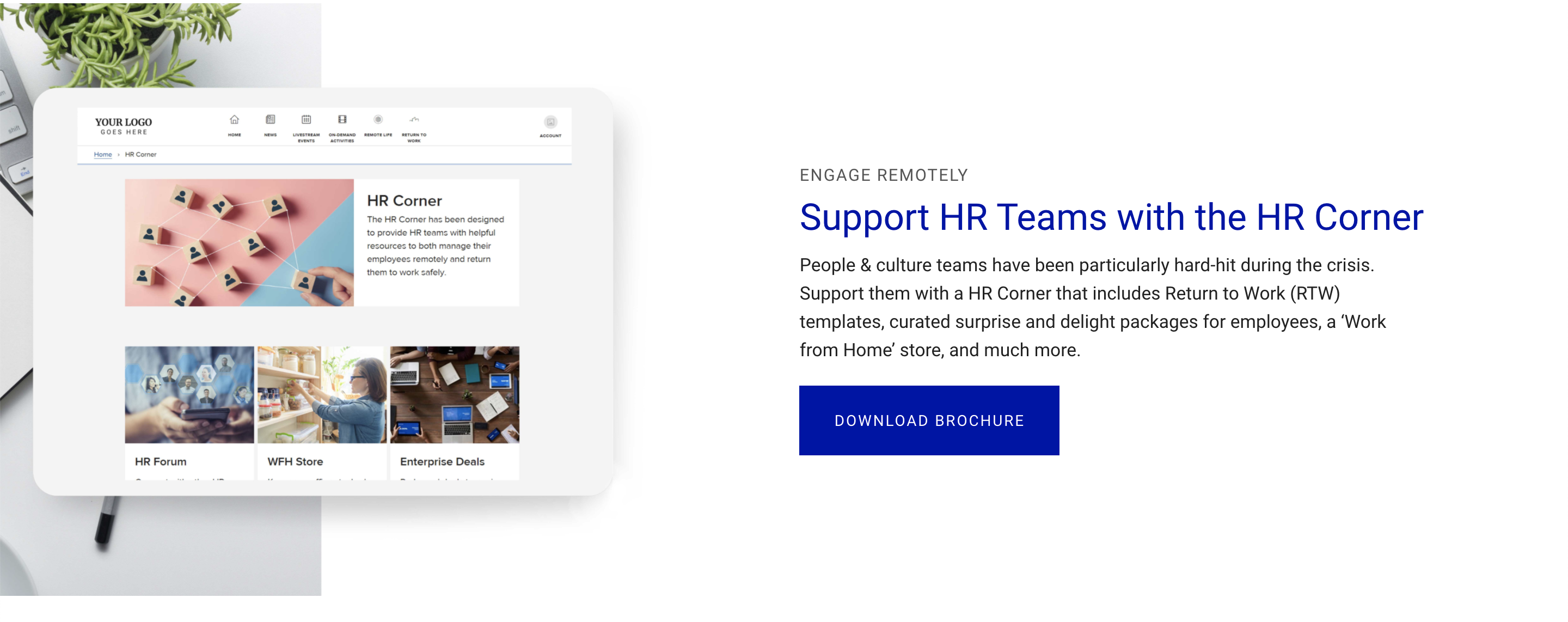In the US and UK, occupancy rates are steadily rising. But it seems they will approach a new ceiling: From now on, the majority of people will split their working time between the office and remote spaces.
These are the hybrid workers. They like the comfort and convenience of remote working, but may still see value in the office HQ as a zone for collaboration and productivity. They will spend, on average, two to three days per week in either place.
The job of CRE owners is clear: Meet the needs of this emergent customer. When employees are in the office, their experience should be productive, comfortable, safe, and communal. Such perks must necessarily be exclusive to that environment. If working in the office is the same as working remotely — that is, it offers little more than a desk, a chair, and a kitchenette — the mobile model will win out. It's hard to trump the convenience of being anywhere, anytime.
Creating the workplace of the future — the hybrid-worker's dream environment — is not as difficult as it seems. It begins with the enhancement of traditional features, and follows with the introduction of useful, practical technologies.
What we can learn from one of the world's biggest workplace experience surveys
Leesman creates global benchmarks for employee and workplace experience. Its Leesman Office survey "unearths the insights necessary to create outstanding working environments, wherever your employees are working‚". Its data comprises a sample size of more than 839,000 employees across 5,603 workplaces and 103 countries.
According to the findings of the Leesman Office survey, the best workplaces in the world share common elements: Comfortable and practical working environments, high reported levels of productivity, and high reported levels of pride and community. And, as we've pointed out before, these top-rated workplaces (known as Leesman+ workplaces) have the largest proportions of employees wanting to work in the office four days or more per week.
Here are five considerations to help prepare your office asset for the revolutionary future of the workplace.
1. Are you set up to offer space flexibly to existing and new tenants?
CRE owners should be thinking about flexible space. Writes real estate expert Antony Slumbers, "you should be thinking about 'Space as a Service', where you purchase what you need, when you need it. And that might be five days a week, or it might be one day a week". Unfortunately, the commercial real estate industry, at large, is not suitably prepared to cater to a customer base that will favour flexibility above all.
"One wants steady inflexibility‚" Slumbers writes of owners and developers, and 'the other [wants] dynamic flexibility. Once side is not going to get what they want.'
Of course, dramatically shifting your business model to accommodate flexible space options is no simple task. It may force you to reorganise your floor planning, or repurpose building common areas and function spaces. You may need a completely new governance system for managing leases. These are likely the simplest of the changes required.
Getting started, however, needn't be hard. With the Equiem tenant experience app's e-commerce plug-in, you can create all manner of flexible spaces and offer them for instant booking to your tenants. You can even extend access to the wider public. Meeting rooms, common areas, breakout spaces, desks — all can be monetised, booked, and paid for immediately using our app. Booking additions and extras, such as cleaning, catering, and equipment, can be easily added. Building management teams can manage booking sessions, check customers in, and coordinate pre- and post-rental cleaning.

This solution is a perfect jumping-off point, helping you to test the demand for flexible space options across your assets. It will also help you to build new operational models, iteratively and cost-effectively, that can be scaled should you choose to implement larger enhancements to your flexible space strategy.
2. Can you support companies as they navigate the challenges and opportunities associated with office space and hybrid working?
In the wake of the pandemic, companies are thinking less about physical office space than they are about the health and efficacy of their company. "Your aim is not to have to think about real estate," Slumbers says, "your job is to enable your employees to be as happy, healthy AND productive as they can be. You want to be people centric, not office centric."
Are your building management teams considering this need with regards to everyday customer service and relationship management? Are there ways you can help your long-term tenants navigate the new world of remote working, and bring stability to their dispersed workforces?
For example, as part of 2020's Remote and Return to Work suites, we created a People and Culture resource centre, accessible on a building-by-building basis through our tenant experience app. It was designed to help building management teams extend a helping hand to Human Resources professionals, who were mired in the logistical muck of lockdowns and far-flung team members. During that period, tenant representatives and heads of Human Resources were our main stakeholders — now, this is truer than ever.

By reaching out to your companies and offering tailored assistance, in any form, you stand to gain a longer-term customer relationship.
3. Can you personalise your communication and customer service strategies, at scale?
Two main benefits of our tenant experience app: Connectivity and communication. Connectivity is a multi-faceted benefit, and contains the seamless integration of multiple systems and services, such as an e-commerce platform and a works request system. The communication benefit is much more straightforward: It gives building management teams a direct line to the majority of employees in an office building, whether they are working in-office or remotely. If you can communicate, effectively and frequently, you can build community, and you can ensure that your tenants are as happy, healthy, and productive as possible.
Our tenant experience app (and wider software suite) enables you to personalise all customer interactions, from services and amenities to content posts. You can create custom user groups based on building, floor, floor area, company, role (such as tenant rep, or fire warden), interest (such as "bike commuter" or "ice-cream lover"), and more — then, you can offer exclusive products, services, and content solely to those groups.
This is personalisation at its best. Personalisation grows customer relationships, organically, which in turn empowers leasing teams. Best of all, you obtain granular data on customer behaviour from your efforts, which can be used to learn crucial things about what your tenants think, want, and do.
4. Can you prove that your office environment is safe, healthy, and conducive to productivity?
High levels of CO2 cause a 23% impairment in decision making, and an 11% reduction in productivity. If you don't monitor Indoor Air Quality (IAQ), temperature, and other parameters indicative of office health and comfort, you risk weakening the selling point of your space.
Smart building technology is a simple fix, and it provides you with a unique value proposition (particularly in the new, fast-moving flexible space market). By fitting out your assets with non-invasive bluetooth sensors, you can gather real-time insights on air quality, building occupancy, density, and more. By feeding these insights directly to tenants, you can demonstrate your commitment to the health and productivity of individual customers (employees, in this case).
The home office may be convenient, but there is no guarantee that it is markedly better for productivity than a well-aired, clean, and temperate workspace.
5. Do you have enough data to know when things aren't working?
Data capture and analysis is a big beast to tame, and we should know — we wrote the book on it, in aims to help CRE property and asset managers understand what analytics they should be focussed on, and when.
A good, well-fed warehouse of data will help you to optimise everything you do: back-of-house operations, customer service strategies, services and amenities, facilities, and so on. But to many in CRE, the prospect of ongoing analysis in pursuit of betterment can be daunting. It's a project with no real end.
Here's a good way to start: Use data to figure out what you don't know, or to uncover what isn't working. Normally, these are the easiest insights to find.
Take this common example: Building Management Team A staffs a Customer Experience Manager and a Marketing Coordinator. These two professionals work together on the weekly newsletter, which is compiled on Mondays and sent to tenant representatives on Thursdays. The newsletter is usually made up of short news updates that do not link out to external websites. Occasionally, it might also carry an attached pdf, summarising an update to the building tenant handbook.
Without a tenant experience app and an in-built email delivery client, Building Management Team A might never find out that:
- The majority of content at the bottom of the email newsletter is not being read
- Tenant representatives are bouncing from the email quickly, because there is no associated action to perform
- Tenant representatives are not interested in the content being supplied (in this case, links to content posts housing news updates would help to rank the popularity of the content, from most-clicked to least)
- A Equiem newsletter notification blast will reach a greater proportion of the audience, more quickly, and result in more interactions (in this case, they cannot ascertain which medium is better because they cannot experiment)
Ultimately, they would never truly know that they are using their time and resources ineffectively. Building Management Team A would benefit from our Analytics Dashboards, which show via clear visualisations how the simplest of inputs and interactions are performing.



